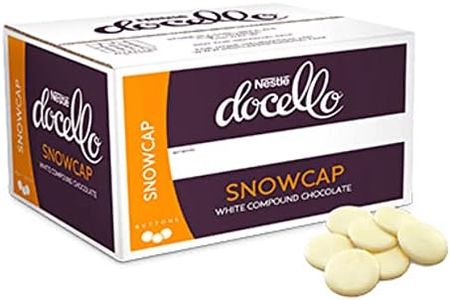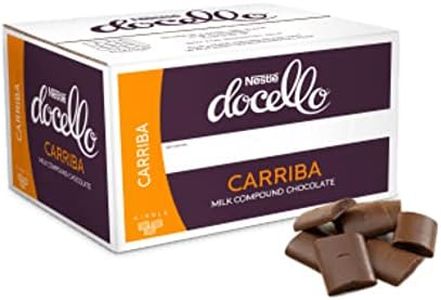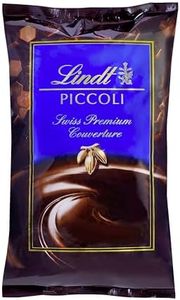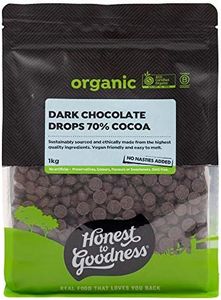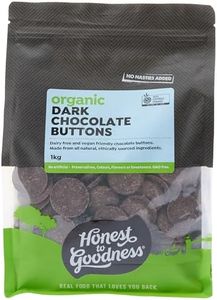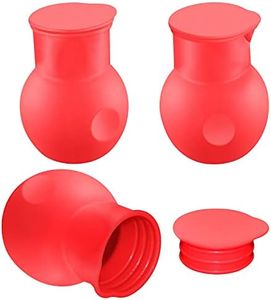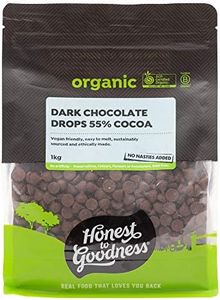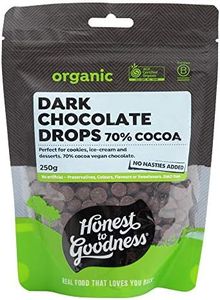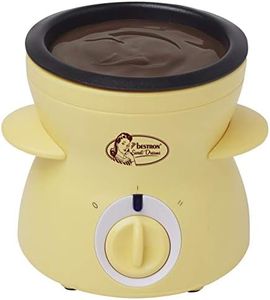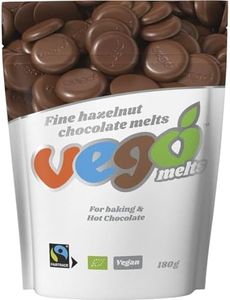We Use CookiesWe use cookies to enhance the security, performance,
functionality and for analytical and promotional activities. By continuing to browse this site you
are agreeing to our privacy policy
10 Best Melting Chocolate
From leading brands and best sellers available on the web.Buying Guide for the Best Melting Chocolate
When selecting chocolate specifically for melting, it’s important to consider factors that influence how smoothly and evenly your chocolate melts, as well as the final taste and texture. Melting chocolate is used in a variety of recipes—from dipping fruit to baking or making confections—so you want to ensure you pick the type that best matches your cooking needs. Paying attention to a few key characteristics will make your chocolate-melting experience much more successful and enjoyable.Cocoa Butter ContentCocoa butter is the fat naturally found in chocolate and is largely responsible for how smoothly chocolate melts. Higher cocoa butter content means chocolate will melt more fluidly, giving a shinier finish and smoother texture when it sets. For melting and dipping, look for chocolate labeled as 'couverture' or designed for melting, as these usually contain higher cocoa butter. If you’re using chocolate for coating or making treats with a glossy finish, aiming for higher cocoa butter is best. For basic baking or recipes where shine and smoothness matter less, lower cocoa butter can still work.
Type of Chocolate (Dark, Milk, White)The type of chocolate you choose—dark, milk, or white—affects both flavor and melting behavior. Dark chocolate generally melts more smoothly and quickly, and has a more intense cocoa taste. Milk and white chocolates are creamier and sweeter, but can be trickier to melt as the added milk solids and sugars can cause thicker consistency and are easier to overheat. To pick the right type, consider the flavor profile and texture you want: dark for rich, deep flavors; milk for creamy and sweet; white for a mild and very sweet base.
Presence of Additives (Stabilizers, Fillers)Some chocolates contain stabilizers, vegetable oils, or additives rather than pure cocoa butter. These ingredients may help the chocolate tolerate higher temperatures or set quickly, however, they often compromise on taste and melting quality, sometimes causing chocolate to seize or turn grainy. For smooth melting, look for chocolate with fewer additives and more natural ingredients. If high quality finish and true chocolate taste are important, avoid compound or candy melts unless your recipe requires them.
Form Factor (Chips, Bars, Wafers, Blocks)Melting chocolate comes in several forms: bars, blocks, wafers, chips, or callets. Wafers and callets are designed to melt quickly and evenly because of their size and shape, ideal for dipping or drizzling. Bars and blocks need to be chopped but are great for controlling portion and quality. Chips often have additives that help them keep shape, making them less ideal for smooth melting but convenient for quick recipes. Choose smaller pieces for quick, even melting or chop larger bars if you value flexibility and ingredient control.
Tempering RequirementTempering is a process of heating and cooling chocolate to stabilize it, essential for glossy finish and snap in dipped or coated treats. Some melting chocolates are formulated so you can melt them easily without tempering ('easy-melt' or 'coating chocolate'), but these may use more additives. If you want professional-looking, glossy results or plan to store your treats for a while, you may need to temper regular chocolate by following a specific temperature process. Match your patience and skill level to your needs: for simple treats or recipes, go for no-temper options; for gourmet results, be ready to temper.
